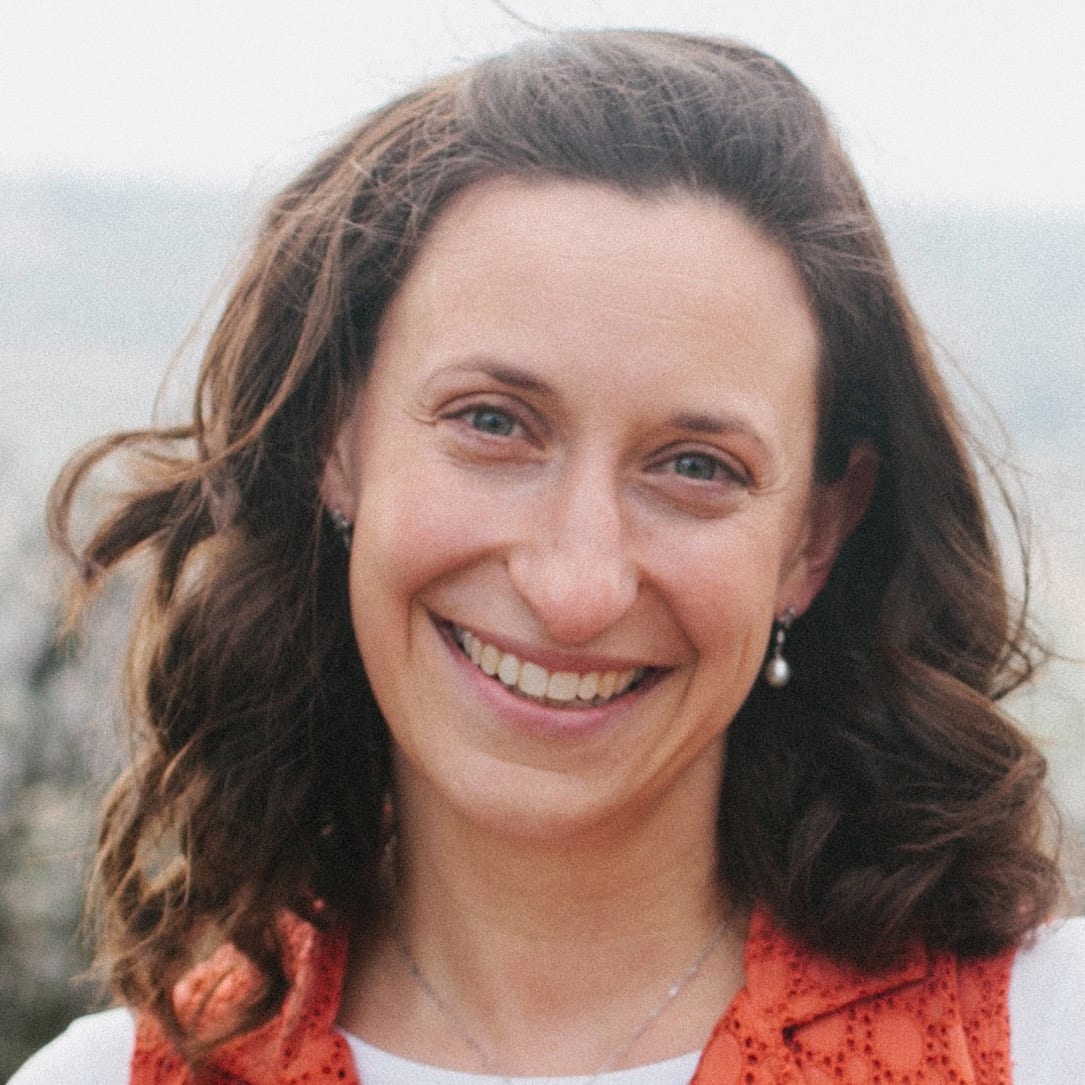Working in the formal school setting taught me to meet benchmarks and standards, quantify achievement, and communicate content with precision and clarity. But the time I spent in the world of camp taught me about the importance and impact of relationships and social-emotional elements in reaching every child, pushing the bounds of my own creativity to teach meaningful, personal lessons that are retained. I spent years imagining and inventing ways to bring the soul-transforming impact of camp summers to the hallways of school. Now I work to ensure that the precision, depth, and concrete elements of the world of the classroom enhance our work in camp.
Space is a critical, differentiating factor between school and camp. Nature, good weather, and the picturesque environment provide an inspiring backdrop for the learning done in a camp setting. Brick and mortar structures, shortened winter days and the rigidity of the daily grind are a challenging part of the formal educational space. At Camp Stone, where experiential education is the meta-lens through which we design all programs and activities–everything from tefillah, to meals, formal learning, night programs, and even the time spent moving from one location to another–we are compelled to incorporate all outdoor and indoor spaces to accomplish our objectives. Camp Stone doesn’t have any “classroom” space. We think of the entire campus as the classroom and transform different locations to create spaces for learning. The authentic and organic nature of the learning done at camp creates its transformative impact.
When I say experiential education, I am referring to content rich learning that is conveyed through hands-on or interactive media or processes. Part of that process is not only participation in the experience, but the process of developing a sense of personal connection and ownership over that experience. We accomplish this in two major ways. Firstly, each month-long session, we choose a Tochnit, a period of Jewish history that is explored based on a chronological continuum. We create a fully immersive experience through activities (tochniot), that begin when the busses arrive in camp, extend through daily night activities and a wide array of engaging, interactive modalities throughout each day. The “Village” is the second place in which space is transformed to accomplish deep and meaningful learning. I will illustrate each of these with examples from summer 2019.
Remaking space
Our nearly 500 campers traveled to camp in mid-July for our second session to see the expansive green lawns, magnificent forests, and corn fields on the approach to camp. Upon arrival, the familiar sports fields, covered recreation space, and bunks were all there as they remembered. But, as in each summer, they were not being welcomed back to Camp Stone, instead, they were joining the procession of Israelites who gathered from all around the Davidic Kingdom to march toward Jerusalem carrying the Ark of the Covenant for the dedication of Solomon’s Temple. After 11 months of waiting, these campers, like the Israelites before them, were full of anticipation to be a part of such an event. Though the busses pulled up to what would be the upper baseball field during the rest of the session, today it was full of animals, staff members prepared as Kohanim and Levites bearing instruments for the procession, and even snacks for the weary travelers. Once all of the “travelers” arrived, we prepared for the procession. Through the use of extensive backgrounds, costumes, and organized activities, the entire upper area of camp was transformed into four stations which prepared the campers for their ascent to Jerusalem and Temple Mount with all of the Temple vessels, including full size replicas of the Yam Shel Shlomo (the huge basin holding the water for the Kohanim to wash), the Menorah, the Shulhan (Table for the Showbread), and the pillars of Yakhin and Boaz (I Kings 8). After completing the stations, the campers reconvened at the Shaarei Yerushalayim (actually the bridge – the point which leads to the main part of camp) and were gathered together by King Shlomo and the Kohen HaGadol (the Head Counselors), and then marched toward the Beit Hamikdash to hear King Shlomo address the crowd.
As they arrived at the structure that they had known from previous summers as the Outdoor Beit Knesset (with mincha time quickly approaching (!)), they were struck that it was surrounded by walls. For the course of this month of camp, these walls, some 15 feet high, would signify the walls of the Beit Hamikdash. This was a visible and useful educational tool, as these walls existed for the duration of the first temple period, were burned by the Babylonians, were left desolate for 70 years, finally rebuilt in a shell of its former glory, and ultimately expanded under Herod. As the month continued, the campers saw themselves as participants in these events. This transformation of the Outdoor Beit Knesset to our central “Beit HaMikdash” for the duration of the month was but one example of a profound educational tool.
Focusing the Village
The “Village” is a collection of gazebos, most of which have four open walls and a roof above, save for our planetarium which is a fully enclosed structure. It includes permanent space dedicated to a blacksmithing shop, a glassblowing shop, a woodworking shop, and a medieval bread-baking oven. The village is set in the woods and can be entered through a gated entryway. In our first session, Moshevet Hamedina (dedicated to the history of the modern state of Israel), our village exploration centered around Israeli technology and innovation. Each of the nine stations that the campers participated in over the course of the summer related to different aspects of this theme. In one station they were asked, as a group, to design a national water carrier using PVC pipes, a map of the state of Israel, and some other materials. In a different station, they assembled personal “life-straw” type water filtration systems. In a third station, they worked with wood to create personal planter boxes that included a drip irrigation system that could be used with a water bottle. All the while, in the background you could hear UShe’avetem Mayim Besasson, Mimainei Ha’yeshuah (the Israeli folk song celebrating the discovering of water on Kibbutz Deganya). In the course of visits to these 3 stations, the campers were able to achieve a broadened and deepened understanding of the importance of water economically, politically, culturally, and spiritually for the State of Israel.
Camp is an organic place to engage in this kind of learning. Though Israeli children are raised with this sensitivity to water firsthand, American campers become aware of the availability or scarcity of water in a host of ways that would not occur while at home for most of our campers. Though most water used for drinking or bathing is obtained from a tap in a bathroom or handwashing sink, while in camp they become attuned to much more. In addition to the presence of a lake, and many streams on our campus, the campers see and have exposure to water pumps that connect to wells to draw water from the ground. Though it may seem obvious, living in rustic and outdoor conditions sensitizes the children to the impact of the rain, the difference between a light rain and a heavy rain on daily activities, wardrobe, and even behavior. This is one such example of how the camp space lends itself to exploration that yields a profound impact.
Can it be done is schools?
Though it can be a challenge, when thinking about transforming space in schools, I think many of these same principles can be applied. In what ways can we transform school spaces to be organic and authentic? Below, I identified five factors that could be considered.

Estee Fleischmann
Estee Eisenberg Fleischmann has been involved in Jewish Education for over 20 years. She has held numerous positions in camps and day schools, including Junior High Director, High School Dean of Students, Mashgicha Ruchanit (Spiritual Advisor) at Fuchs Mizrachi. She and her spouse, Yakov, have been Co-Directors of Camp Stone since 2016.
See all the previous issues of Jewish Educational Leadership
- How students are occupying the space? Are they gathered for a discussion or spread out in workstations? What can be done to the space, without compromise or partial steps, to best accommodate the educational goals? Design the space based on the lesson planned to ensure optimal student engagement. Remember the circle rule–circles really do work better than any other shape to create a sense of equal participation of all members–and accept nothing less, even if the shape has a proper name in geometry. And remember, everyone can lift tables, move chairs and participate in the process of transforming the space. Sometimes, we find ourselves in a classroom situation with a time crunch and decide to forgo the time necessary to reconfigure the space in lieu of more time dedicated to the “learning.” Almost always, a more powerful and meaningful 18-minute discussion has a higher degree of impact than a discussion conducted in 25 minutes but under less optimal conditions.
- Tech policies can be fluid. What classroom guidelines exist to help create the tone desired? What are the roles of computers, tablets, and smartphones? Are the expectations the same during a “discussion” as they are for independent worktime? What about during a frontal teacher presentation? Different educational modalities have different expectations vis-a-vis technology. A discussion (in the circle shape referenced above) can be a modality by which to analyze and develop ideas, but also one wherein verbal etiquette and communication can be taught in the digital age without the use of cell phones. The no-cell phone policy at camp absolutely contributes to the authentic environment.
- Décor is critical. I am not speaking here about furniture, though surely that can be helpful. Though painting school walls is often not allowed in our buildings, opportunities for student investment in defining the space transforms the level of engagement. Creating nice bulletin boards used to be thought of as a necessity only for elementary school teachers, but I would argue that it is equally, if not more, determinative in defining space for middle school and high school students. The spaces could be adorned by the students themselves as part of the classroom requirements. The use of paintings, timelines, charts, pictures, and photographs are critical components to setting a tone, or creating a vibe for when the students enter the classroom. In the camp setting, these aids are intentionally and critically placed on weather-proof signage, in bunks, and in the Beit Midrash–places where wandering eyes can gravitate for continued engagement. A particularly inventive pair of staff members prepared “bathroom comics” intended to convey important parts of the Tochnit, so that even time in the bathroom could contribute to the immersive, holistic educational experience.
- When possible, utilize spaces that are authentic and organic. Schools should absolutely invest in outdoor classroom spaces that are appropriate for education–not the classic circle-on-the-grass because it’s finally a nice day in April in the Midwest–to encourage a different educational outcome. Though in some climates this can be a challenge, there is surely benefit in creating opportunities to be outside, while taking into account considerations of distractions. Exploring alternative spaces in the school setting can also be beneficial; maybe a particular Talmudic topic being explored that would benefit from the use of the science lab, or a trip to the Aron Kodesh and interaction with the Sifrei Torah that can be a meaningful enhancement.
- Many factors contribute to the feel of a space. How are those maintained in terms of décor, sound, and behavioral guidelines? What is the impact on the school’s culture? How often have we walked by a student lounge to hear the sounds of one particular student’s UE Boom 3 playing (albeit censored) rap music while everyone else sits around looking at their phones. The management and upkeep of those spaces are determining factors in shaping the culture and community that exist within the school.
Reflection
In my own life, I often find myself reflecting on how the space I am in makes me feel. The expansive view out my car window, the vineyard spotted hills that I love to see on my run, the Jerusalem stone façade outside of my kitchen. Do I smell the local horse stable or wildflowers? Do I hear the rumbling of passing busses or the latest Yishai Rebo album? Without a doubt, each of these factors impacts me emotionally, intellectually, and psychologically. The more that our thinking about education becomes holistic, the greater our impact will be. Rethinking the ways we utilize space undoubtedly sets us on a path to creating transformative educational outcomes.




